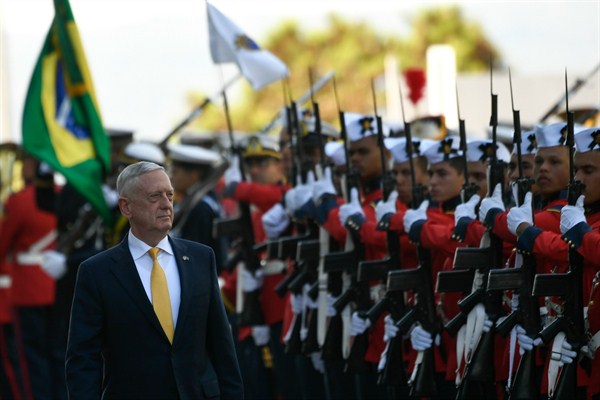America’s foreign policy under President Donald Trump can be confusing. That is true in Latin America just as it is in Russia, Asia or Europe. One moment the president boasts of his great relationship with Russia; days later the U.S. imposes new sanctions. One day Trump heaps praise on North Korea’s leader; days later Pyongyang accuses the U.S. government of behaving like the mafia. The explanation, as I’ve written, is that America today has two foreign policy tracks, often contradictory and at times in conflict with each other. One is Trump’s, the other is the rest of the government’s. That two-track approach became visible in South America last week, where Defense Secretary James Mattis just completed a fascinating visit.
For people across Latin America, the headlines coming from Washington have been jarring. Trump is largely viewed as someone who disparages the region, and who views the lands south of the border as the source of undesirable migrants, drugs and “the worst trade deal” ever signed, NAFTA. Trump has emphasized areas of friction, seeming less interested in building metaphorical bridges than physical walls. His most notable effort at outreach to the region, if it could be called that, was a stunning threat to take military action against Venezuela, an idea that was not well received by leaders in the region.
But then there is that second track. Mattis’ first visit to South America as defense secretary contrasted sharply with the rough foreign policy outlines sketched by the president.

